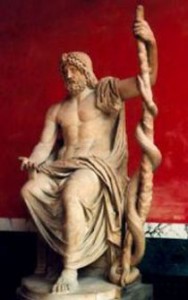What is the interpretation given by modern philosophers to the Delphic injunction “O man, know thyself”? (Question in Quora)
This knowledge or question is one modern philosophers, psychologists, educators, and people in general are, to my knowledge, not interested in.
‘… self-knowledge, is hard to come by. To ‘know thyself’ (Orphic oracle) is a tall order, and most people are not interested in making the effort, or know how to go about it. But man is called upon to surpass, transcend himself, not to ‘make himself’. Until that happens, it has been said, “we are all hypocrites”. As we have seen, we cannot blame the ‘ego’ (or one’s ‘personality’: “the way I am”), that phantom, mask or impostor, for having infected us in the first place. Is it genetics? Heredity? Clearly, in the end, no one can escape responsibility – if we take the individual (‘I’, myself) as separate, or s/he take themselves as such. What we call ‘my ego’ is nothing but an excuse, a rationalization and, ultimately, an escape from real freedom.’ — Ego, ‘ego’, and metaphysics – Consequences for Psychotherapy Continue reading

